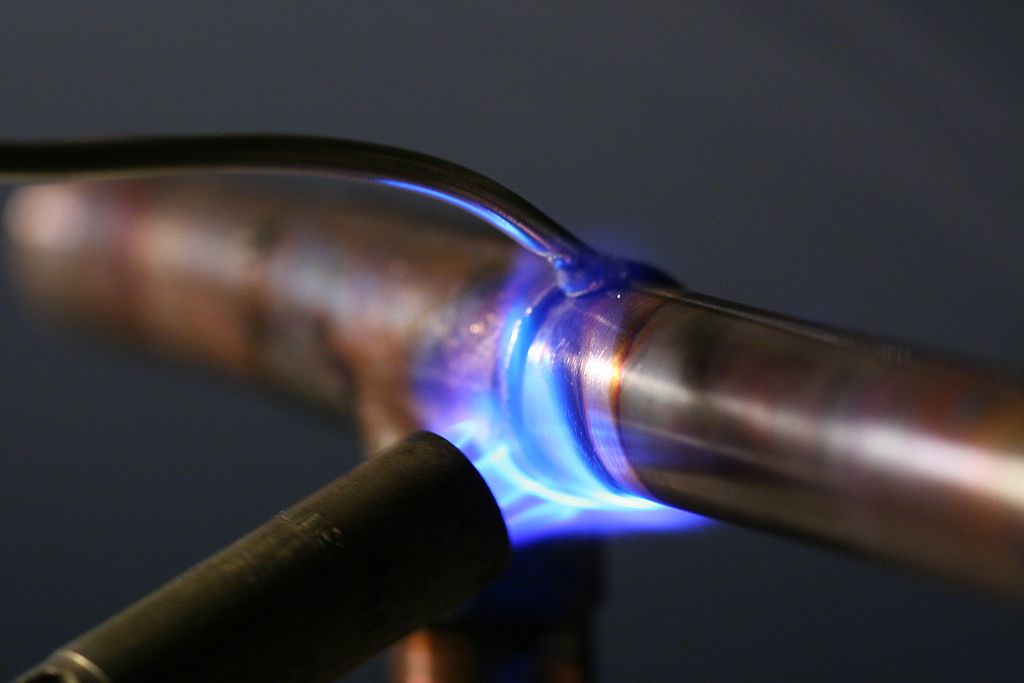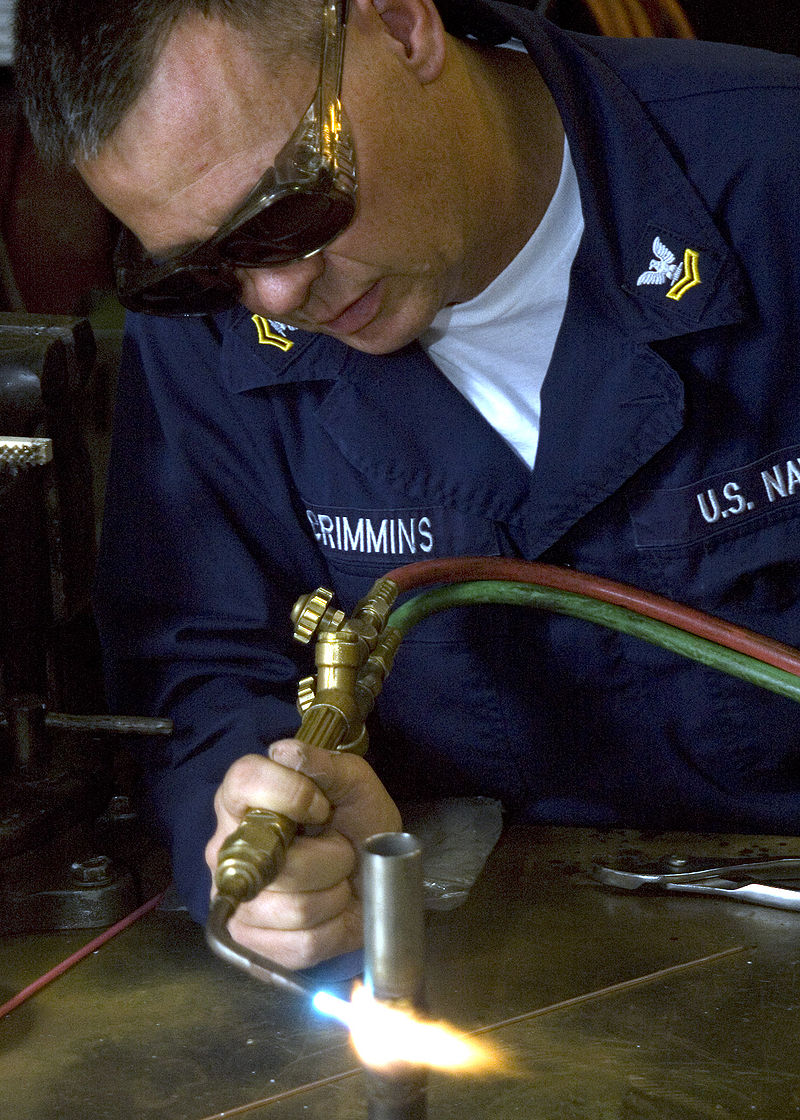Difference Between Soldering and Brazing
Table of Contents
Key Difference – Soldering vs Brazing
Although both soldering and brazing are two methods used to join metals and have similar definitions, a difference can be observed between soldering and brazing. Both processes are used to join two or more metals together using a filler metal material, which has a lower melting point than the joining metals. These processes involve heating of materials to a specific temperature, where the filling material becomes a liquid while joining metals remain as solids. The key difference between these two methods is the heating temperature; brazing uses a higher temperature above 450°C, and soldering uses a temperature below 450°C.
What is Soldering?
Soldering is used to join two or more metal materials together using filler solder material. In this process, the solder material used to join other metals does not heat to a high temperature. In other words, solder material becomes a liquid at a relatively low temperature. It is usually heated to a temperature below 4500C. During early days, most of soldering materials contained lead (Pb), but now the use of lead-free solders have been implemented due to environmental and health concerns.

What is Brazing?
Brazing is defined as joining two or more metal materials to produce coalescence of material. In this process, two or more metal items are joined together by melting and flowing a filler metal into the joint. The filler metal has a lower melting point than the adjoining metal.The filler material is a liquid at the brazing temperature, but other joining metals are in solid phase. In this process, the filler metal is heated above 450°C, and it is distributed to the joint by capillary action. The process ends after cooling; the brazed joint has a strong metallurgical bond between the filler metals and other metals.

What is the difference between Soldering and Brazing?
Characteristics of Soldering and Brazing:
Temperature:
Soldering: Soldering is done at a relatively low temperature compared to brazing. In this process, solder materials and the metal materials to be joined together are heated to a temperature below 4500C.
Brazing: In brazing, joining metals and the filler metal material is heated to a relatively higher temperature, which is above 4500C. Filler material becomes a flowing liquid at this temperature.
Filler Materials:
Soldering: The filler materials used in soldering are called, “solders.” The solder material type differs according to the application. For example; in electronic assembly, an alloy of tin and lead (Sn: Pb = 6:4) is used. In addition, the tin-zinc alloy is used to join aluminum, lead-silver alloy for temperatures higher than room temperature, cadmium-silver alloys for high-temperature applications, tin-silver and tin-bismuth for electronics and zinc-aluminum for aluminum and corrosion resistance soldering.
Brazing: Most of filler materials are metals alloys, and filler material varies depending on the application; for example, it should be able to wet the base metals, withstand the future service conditions and melt at a relatively lower temperature than the base metals. The most commonly used brazing metal fillers are alloys; Aluminum-silicon, Copper, Copper-silver, Copper-zinc (brass), Copper-tin (bronze), Gold-silver, Nickel alloy, and Silver.
Applications:
Soldering: Soldering is used in plumbing systems, joining metal sheets, roof flashing, rain gutters and automobile radiators. It is also used in electrical wiring and in printed circuit boards.
Brazing: Brazing is used in a wide range of applications; to fasten pipe fittings, tanks, and carbide tips on tools, radiators, heat exchangers, electrical parts, and axles. It can join the metals of the same type or different types of metals with considerable strength. For example, this method enables to join cast metals to wrought metals, dissimilar metals and also porous metal materials.
Image Courtesy: “Propane torch soldering copper pipe” by neffk (talk) own work (CC BY 2.0) via Wikipedia “Brazing practice” by Mass Communication Specialist Seaman Whitfield M. Palmer (Public Domain) via CommonsncG1vNJzZmivp6x7pbXFn5yrnZ6YsqOx07CcnqZemLyue8OinZ%2Bdopq7pLGMm5ytr5Wau26%2FzqWbnqqZo7Rurc2dZK%2BrXZe%2FosbIp55o